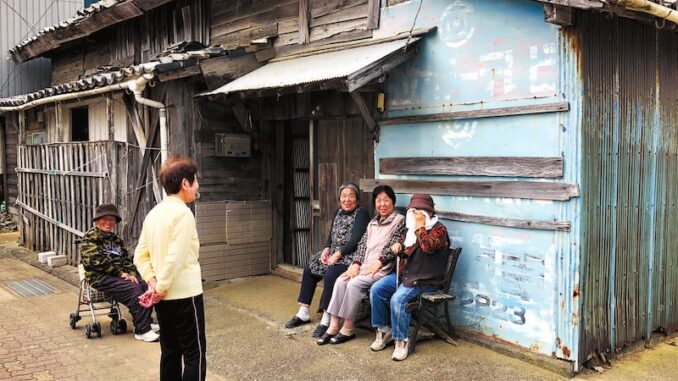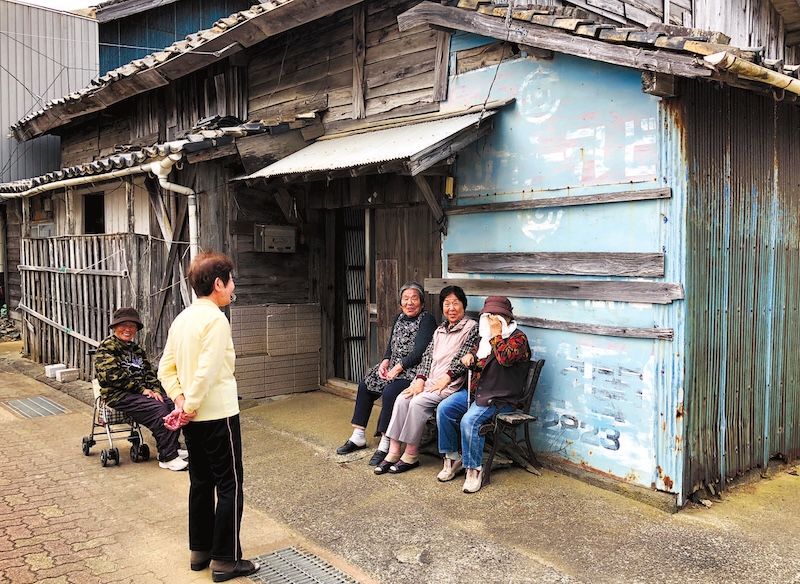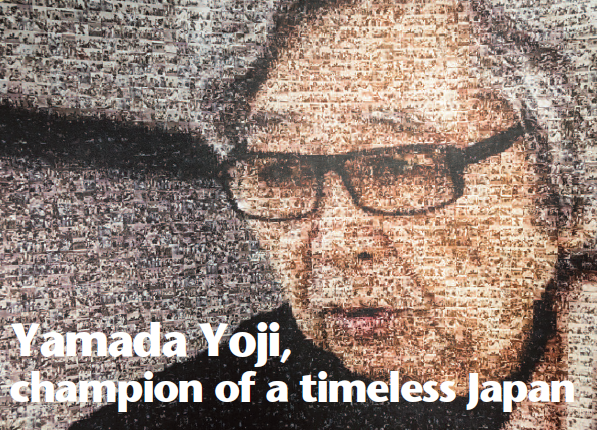

The akiya (vacant house) issue in Japan has been long seen primarily as a rural problem; an outcome of depopulation and youth migration from the countryside, leaving behind abandoned homes and farmland. However, since the 2010s, urban areas have increasingly faced their own vacant housing crisis. In major metropolitan regions, empty homes have proliferated in suburban neighborhoods developed at the outer edge of daily commuting range. In the Tokyo Metropolitan Area, Tokorozawa City in Saitama Prefecture enacted a local ordinance addressing vacant houses in 2010, followed by Ushiku City in Ibaraki Prefecture in 2012. National recognition of the problem came in 2015, when the Ministry of Land, Infrastructure, Transport and Tourism (MLITT) introduced the Special Measures Act on Vacant Houses.
In regional cities across Japan, a phenomenon the MLITT refers to as “urban spongeification” is unfolding. This describes the irregular spread of vacant land and empty houses, appearing in scattered patches, even within areas meant to serve as commercial and residential hubs. The phenomenon is not limited to cities; it also affects suburban neighborhoods in rural regions.
At first glance, the vacant house problem might seem to stem from individual neglect—homeowners failing to maintain their properties, or the next generation abandoning homes and storefronts once the original owners move out or pass away. But if the issue were only about personal responsibility, it likely wouldn’t be as widespread, or as intractable, as it is today. The rise in vacant properties reflects deeper, systemic shifts; structural changes in cities and social frameworks that no individual can resolve alone.
Vacant houses in Japan can be broadly categorized into four types, as outlined in the 2023 Housing and Land Statistics Survey by the Ministry of Internal Affairs and Communications (MIAC): vacant houses (1) for rent, (2) for sale, (3) secondary housing, and (4) house not belonging to the other three categories, including places awaiting demolition or redevelopment.
According to the Ministry’s survey, the number of secondary residences (villa, etc.) has remained relatively stable since the 1970s. However, the other three types of houses have increased significantly in number, particularly since the 1998 survey.
Houses located in the suburbs of a metropolitan area (commuting area), are commonly put on the market for rent or sale when they can no longer be lived in. In Japan, however, the secondhand housing market is weak to begin with. Also, because most homes in Japan are inherited rather than bought or sold on the open market, many people in regional cities or areas far from major commuting zones are reluctant to sell or rent them out.
This hesitation often stems from cultural values: a strong sense of attachment to ancestral property, the idea of preserving family legacy, and the social expectation that homes remain in the family line. Even if the heirs no longer live there – or have no intention of returning – they may still feel a duty to maintain ownership. As a result, many houses sit empty, neither sold nor leased, contributing to the growing number of vacant homes across the country.
The akiya problem affects various groups – local residents, property owners, as well as national and local authorities – in different but interconnected ways. First of all, the increase in long-term unoccupied homes, especially those left empty after the original residents die, threatens the stability of local communities. In areas already facing aging populations and population decline, this can lead to the collapse of essential services and make it difficult to sustain neighborhood life.
Vacant houses next door can also cause direct problems. Overgrown vegetation, pests, and animals pose hygiene risks. Structurally deteriorating homes may become physically dangerous – parts of the house can collapse or blow off in storms. Empty homes are also more vulnerable to arson, illegal dumping, or becoming crime hotspots.
From an administrative standpoint, neglected properties – referred to in law as “specific vacant houses” – create a growing burden. They reduce local tax revenue while increasing municipal costs related to monitoring, enforcement, and cleanup. Over time, these neglected properties contribute to the decline of the living environment and can weaken the vitality of entire neighborhoods, complicating urban planning and redevelopment.
For owners and their families, an inherited vacant home can become a significant burden, financially, physically, and emotionally. For instance, their responsibilities may include regular inspections and maintenance, crime prevention measures, mowing the lawn and managing vegetation, ongoing payment of property taxes, and handling unexpected repairs or damage. These tasks can be costly and time-consuming. Demolishing a house costs on average 1 to 2 million yen, and if the interior is cluttered or unsafe, the cost can rise even higher. For many families, managing a vacant property from afar adds stress and uncertainty.
The rise in urban vacant houses is closely tied to the 11th goal of the Sustainable Development Goals (SDGs): “Sustainable Cities and Communities.” When the number of vacant properties increases, the local living environment and essential services begin to deteriorate, making it harder for people to grow old comfortably in the communities they know and love.
Research on aging has shown that even if a home is not perfectly suited for older residents, familiarity with one’s surroundings provides a crucial advantage. For example, seniors with declining eyesight can still navigate their homes safely because they know the layout intuitively. Familiar neighborhoods also provide emotional stability, as many older adults feel a strong attachment to the places where they have lived their lives, formed friendships, and built community ties.
But as more homes are abandoned and local infrastructure weakens, even those who wish to “age in place” may be forced to leave. In this way, the vacant house problem becomes a barrier to aging with dignity and independence, and a society where older people cannot live comfortably is unlikely to feel secure for younger generations either. A sustainable city must support people at every stage of life, not only through housing, but through stable, vibrant communities.
According to the Housing and Land Statistics Survey by the MIAC, Japan’s vacant house rate in 1963 was just 2.5%. At the time, the country faced a significant housing shortage, which was considered a major social issue. However, from the 1960s through the late 1980s, the number of homes in Japan increased rapidly, effectively resolving the housing shortage. But as the total housing stock grew, so too did the number of vacant homes, albeit gradually at first.
By 2023, the total number of vacant houses had reached approximately 9 million, pushing the national vacancy rate to 13.8%. Comparing the figures from 2003 to 2023, the total number of vacant homes increased by about 1.4 times. More notably, the number of vacant houses not intended for rent, sale, or secondary use – often referred to as abandoned or neglected homes – rose by approximately 1.8 times, from 2.12 million in 2003 to 3.85 million in 2023.
The number of vacant houses and the vacancy rate are expected to continue to increase in the future, and a fundamental solution to the increase in vacant houses is required.
The distribution of vacant houses varies significantly by type and region. Secondary homes such as vacation properties, for instance, are heavily concentrated in resort areas like Nagano and Yamanashi prefectures. On the other hand, vacant homes for rent or sale are typically found in the outer suburbs of major metropolitan areas, where housing supply exceeds current demand. Overall, vacant houses tend to be more prevalent in rural areas and regions with declining populations and weak housing demand, like the San’in region (Shimane and Tottori prefectures), the island of Shikoku, and the Tohoku region, all of which are experiencing significant and ongoing population decline.
Conversely, the akiya rate is relatively low in Tokyo, which continues to experience steady population inflows. Okinawa Prefecture also shows a low vacancy rate, likely due to limited habitable land spread across its many islands. This said, even in the Tokyo metropolitan area, the number and rate of vacant houses vary by distance from the city center. Suburban zones (10–30 km from central Tokyo) have a high number of vacant houses, but because the total number of homes is also large, the vacancy rate remains relatively low. In contrast, outer suburban areas (over 50 km away) have fewer vacant houses in absolute terms, but the vacancy rate climbs to around 20%.
These outer zones represent the commuting limit and include many residential developments built during the housing booms of the 1970s and 1980s. In recent years, particularly since the 2010 census, these areas have also experienced a sharp rise in elderly populations, contributing further to vacancy issues as homes are left unoccupied by aging or deceased residents.
The issue of abandoned houses in Japan does not stem from a single cause. Instead, it arises from a complex web of direct and underlying factors that are deeply interconnected. Let’s first look at some of the most immediate, visible causes.
One common cause is complications following inheritance. After the death of a parent or homeowner, a house may be left vacant due to unresolved inheritance issues – often the result of family disputes or indecision among heirs. Beyond legal complications, emotional attachment can also play a role. Some family members may resist selling or demolishing a house because they view it as a repository of family history and memory. Even in modern times, where nuclear families are the norm, the traditional belief that homes and graves are meant to be inherited and preserved still persists in Japan. This cultural view can make it emotionally difficult for families to part with inherited properties, even if no one plans to live in them. As a result, these homes are left empty but not officially put up for sale or rent.
In some cases, properties are also abandoned due to painful circumstances such as accidents, deaths, divorce, or other traumatic events associated with the home.
Some areas are more prone to vacancy simply because of their physical and urban characteristics. Take Yokosuka City in Kanagawa Prefecture, for example. This municipality is known for actively addressing the akiya issue. Here, a high concentration of empty homes can be found in areas shaped by mountainous terrain and valleys, known in Japanese as yato topography.
This isn’t unique to Yokosuka. Across postwar Japan, rapid urbanization and population growth led to residential developments in less-than-ideal locations such as hillsides, cliffs, narrow valleys, and wetlands, which were originally unsuitable for housing. However, as the pace of urbanization slowed and the population began to decline, these areas lost their appeal. Difficult access, natural hazards, and aging infrastructure have made them less desirable places to live, increasing the likelihood that homes there are left vacant.
While some factors directly lead to homes being abandoned, a number of broader background forces – less visible but just as influential – are also driving the steady increase in vacant houses. For one thing, after World War II, Japan faced an overwhelming housing shortage. As industrialization and urbanization progressed, large numbers of young people moved to industrial zones and major cities in search of work. Eventually, they started families and sought larger homes to accommodate them.
To meet this growing demand, housing and infrastructure development was aggressively promoted in suburban areas. At the same time, the government introduced mortgage and tax incentives that favored suburban homeownership, helping to shape Japan into a “homeowner society.”
However, this focus on new housing came at a cost: the secondhand housing market was neglected. Buying and selling older homes remained difficult, and demolishing a property or clearing land was expensive, especially since cleared land is subject to higher property taxes. In this system, keeping an unused house – even one inherited from parents – often becomes the most “rational” choice. The result: many homes are simply left vacant.
The vacant house issue in urban areas has become especially visible since around 2010, influenced not only by Japan’s internal dynamics but also by global trends in urban restructuring. Since the late 20th century, globalization has intensified competition between major cities worldwide. In places like London’s Docklands, financial hubs and luxury residences have transformed city centers into exclusive zones for elite professionals.
Tokyo has followed a similar path. Since the 2010s, the city has seen a surge in high-rise condominiums (tower mansions) and large-scale redevelopment, particularly in preparation for the 2020 Tokyo Olympics. This trend continues today.
In the past, it was common for people to live in the suburbs and commute to jobs in the city center. But now, more people choose to live and work in central Tokyo, where services and infrastructure are more convenient. As a result, suburban areas once considered ideal for commuting are now viewed as being at the edge of commuting feasibility, and are no longer attractive for new development.
This shift has led to a demographic imbalance. Suburban communities are rapidly aging, as younger generations migrate toward the city center. Over time, suburban homes are left vacant, and the overall quality of local services and living environments declines, further accelerating the cycle of vacancy.
In response to these challenges, some Japanese municipalities have begun shifting their policies to embrace the reality of urban shrinkage. Rather than pursuing growth at all costs, these approaches focus on improving the quality of life for current residents. The idea is simple: by prioritizing well-being today, towns can remain livable and sustainable into the future.
Policies that accept shrinkage often include strategic demolition of deteriorated buildings, consolidation of public services, revitalization of compact urban areas, and collaboration with neighboring municipalities to ease the effects of depopulation.
A leading example is Akitakata City in Hiroshima Prefecture, which has adopted a “compact city” strategy. Recognizing its shrinking and aging population, the city has focused on concentrating residential areas and essential services into walkable hubs, while repurposing or removing abandoned properties. It also supports elderly residents through community transport services and localized healthcare. Rather than resist decline, Akitakata aims to build a smaller but more livable city.
In shrinking cities, socially vulnerable groups – particularly the elderly – are often left behind, making it especially important to focus on improving their quality of life. Addressing this challenge requires a combination of approaches, both bottom-up and top-down.
On the grassroots level, encouraging citizen participation in local decision-making can help ensure that policies reflect the real needs of residents. From a top-down perspective, governments can take steps such as increasing public investment in urban infrastructure to maintain essential services and strategically reducing the number of housing units to better align with current population levels. Rebuilding at a more appropriate scale can also help create more livable and sustainable communities.
In Japan, while central areas of major metropolitan regions – particularly Tokyo – continue to grow, it is no longer realistic to apply the same strategies to regional cities and suburbs where population decline and aging are most severe, and commuting has reached its practical limits. These areas require a different approach that accepts shrinkage not as failure, but as a phase to be managed with care and foresight.
Fundamentally, any long-term solution must also address deeper social inequalities. It is essential to eliminate disparities based on gender, age, and income, while embracing the diversity of lifestyles, work patterns, and housing preferences. Without systemic reform, efforts to revitalize shrinking cities will remain superficial. To truly support the well-being of residents, especially those most vulnerable, we must reimagine what sustainable urban living looks like in an era of demographic change.
The issue of vacant houses in cities is complex and deeply rooted in broader urban dynamics, making it a difficult problem to solve. However, it is encouraging that we now have a foundation for discussing “homes” – which have long been treated as private family matters – as a social issue within the context of major urban change.
For decades, Japan has pursued residential development with growth as its singular goal. In the process, aging homes have been abandoned, and with them, the infrastructure, community investment, and cultural identity of entire regions have been neglected.
Looking ahead, we must shift toward a more sustainable model of residential development. This means rethinking how we allocate budgets and resources – not for endless expansion, but for the responsible renovation or demolition of vacant houses, and for the maintenance of existing infrastructure.
Rather than focusing solely on growth, it’s time to embrace urban shrinkage where necessary and prioritize policies that enhance the well-being and quality of life of current residents.
The akiya issue offers a valuable opportunity to reflect on how we live, and to shape a society in which people can continue to reside in the homes and neighborhoods they know and love.
Ginni Simone
To learn more about this topic check out our other articles :
N°152 [FOCUS] A tough reality to handle
N°152 [TRAVEL] With love from the Inland Sea
Follow us !










